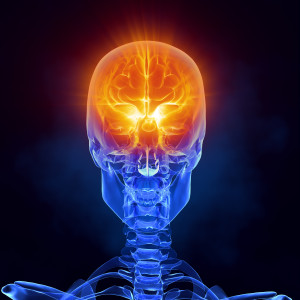There is little argument that America is in the midst of an opioid epidemic, but health officials will argue about how to solve the problem.
Scientific articles published recently in the same journal represent ideas that conflict. The Annals of Internal Medicine, a publication established in 1927 by the American College of Physicians, published two articles on the subject of restriction prescription in hospital emergency departments. The issue revolves around the current guidelines for how much pain medication should be kept in the pharmaceutical areas of emergency departments. One side of the debate says that the current regulation of a three-day supply is not enough for the average emergency department. The other side of the debate says the limited supply will force doctors to make wiser choices in who gets what pain medicine.
Prescription Drug Abuse
New York City made headlines earlier this year when city officials announced that the most powerful and common painkillers on the market today would be restricted in the city’s 11 public hospitals. The move was in response to the abuse of painkillers that has gripped the city. These painkillers include Vicodin, OxyContin and Percocet. Methadone and Fentanyl are no longer distributed in the public hospitals. Those in favor of the restrictions note that there has been a rapid increase in opioid analgesic consequences and that restricting the medications in question will help doctors provide safer care for their patients who are experiencing issues with pain.
Many Americans now have an expectation that a visit to the emergency room will result in acquiring pain medication. Some emergency department personnel agree that something has to be done about that perception, which is bolstered by doctors that could perhaps be less willing to doll out the drugs to patients in pain. Non-narcotic medications are now beginning to find their way into emergency departments, as are pain meds that are engineered to be less addictive.
29 Apr 2013
Prescription Opioid Abuse and Risks for Suicide
Prescription opioids are a group of medications commonly used to treat forms of pain that don’t respond to other types of medication-based treatment. Because of certain changes they make in normal brain function, these medications present a very real risk for both abusive patterns of use and drug addiction; in turn, both prescription opioid abuse and prescription opioid addiction create increased risks for suicidal thinking and active suicide attempts. According to research findings reported in 2012, elevated suicide-related risks commonly remain in long-term opioid abusers and addicts even when they discontinue drug use.
Prescription Opioid Basics
All prescription opioids are based on substances that occur naturally in Papaver somniferum, a plant species popularly known as the opium poppy. Two of these medications, morphine and codeine, come more or less directly from ingredients contained in the sap of P. somniferum. Two other common prescription opioids, hydrocodone (Vicodin, Lortab), and oxycodone (OxyContin), are created in pharmaceutical laboratories through chemical manipulation of naturally occurring opioid substances. Three additional common opioid medications—fentanyl (Fentora, Actiq), synthetic codeine, and meperidine (Demerol)—are manmade substances designed to chemically resemble the natural opioids.
Each prescription opioid medication has its specific typical role in medical treatment. For instance, doctors typically use codeine to relieve relatively moderate pain or ease the effects of medically serious coughing or diarrhea. Morphine is commonly used to relieve severe pain in surgical settings, while doctors use hydrocodone and oxycodone for a range of conditions involving moderate to severe pain. Regardless of their particular common use, all prescription opioids (and illegal opioid drugs) achieve their pain-relieving effects in a similar way by entering the body and attaching themselves to sites in the nervous system called opioid receptors. When activated by the presence of opioids, these receptors help override pain signals traveling through the nervous system to the brain.
When opioids attach themselves to opioid receptors located in the brain, they produce an additional effect by triggering a dramatic increase in the levels of a brain chemical called dopamine; in turn, this dopamine increase produces intense pleasure. In prescription users, opioid abuse and addiction typically become issues when a given individual seeks out this pleasure as a recreational activity and increases his or her level of intake above the level sanctioned by a doctor. This situation differs fundamentally from the situation of prescription users who follow their doctors’ orders and come to depend upon opioids’ legitimate pain-relieving effects.
Suicide-Related Risks
Unfortunately, suicidal thinking and active suicide attempts are found among prescription opioid abusers and addicts with some regularity. In 2012, researchers from the American Psychiatric Institute for Research and Education examined suicide-related factors in almost 38,000 participants in a study called the 2009 National Survey on Drug Use and Health, which was conducted by the U.S. government’s Substance Abuse and Mental Health Services Administration.
These researchers found that about 15 percent of the survey respondents had misused a prescription opioid medication at least once. They also found that roughly 11 percent of all people who had misused prescription opioids for at least two years had considered suicide in the year before the survey. In addition, roughly 9 percent of all people who had misused these medications for less than a year had considered suicide during the same period of time. By comparison, only 3 percent of people who didn’t use prescription opioids considered suicide in the year before the survey.
The authors of the American Psychiatric Institute for Research and Education’s study noted several factors that help determine the risks for suicidal thinking in people who misuse prescription opioids. The most prominent factor is a level of misuse that qualifies for standard definitions of drug abuse or drug addiction; fully 23 percent of survey participants with suicidal thoughts self-reported this degree of medication misuse. Another important factor is the presence of symptoms consistent with a diagnosis of the psychiatric disorder known as major depression. In addition, the authors of the study concluded that the risks for suicidal thinking don’t end with the discontinuation of opioid use, and former long-term users continued to exhibit suicidal thought patterns significantly more frequently than people who have never used prescription opioids.
About 18 percent of all current prescription opioid users/abusers who considered suicide actually went on to make active suicide attempts, while 7 percent of former users/abusers with suicidal thoughts attempted suicide. By comparison, 11 percent of survey participants with suicidal thoughts who never used a prescription opioid attempted to kill themselves.
29 Apr 2013
Doctors Abusing Prescription Medication
According to Consumer Watchdog, one in 10 physicians abuse prescription medicines at some point in their career, and still continue to practice medicine. The situation is reminiscent of the TV series “House M.D.,” which features a Vicodin-addict doctor continuing to practice medicine despite his friends and colleagues being well-aware of his problem. Unfortunately, unlike the fictional Dr. House, most real doctors have a more hands-on role and don’t have borderline superhuman intelligence to fall back on, and therefore put themselves and their patients at considerable risk. You might be more familiar with the issue through prime TV programming, but it’s a real issue that requires immediate management.
Are Doctors More Likely to Abuse Prescription Medicines?
Although the rates of illicit drug use among practicing physicians is lower than in the general population, research has shown that prescription medicine abuse is five times more likely in doctors. Prescription drug abuse is currently at epidemic levels in the U.S., causing more overdose deaths than heroin and cocaine combined, and doctors are overrepresented in the population of people abusing the drug. This is often allowed to continue without the doctors losing their medical licenses, in some cases even after multiple disciplinary hearings.
What are the Potential Causes?
It’s easy to see that a big part of this is likely to be related to doctors’ increased access to potentially addictive substances. This is shown by the fact that anesthesiologists (doctors who have wide access to substances such as opioids) are generally more likely to abuse prescription drugs than doctors in other specialties. Simply, the fact that they are more closely connected with potentially dangerous substances makes them more likely to take them and become addicted. However, it’s clear that this isn’t the whole picture, because oncologists, for example, have low rates of substance abuse but high level of access to potentially addictive substances.
The other major component of the problem is that many doctors are able to continue practicing even if they have a recognized issue. In addition to the lack of preventive action being taken as part of disciplinary proceedings, most hospitals don’t routinely test doctors for drugs, which means that the problem is likely to continue unchecked for longer. There is also a suggestion that doctors would rather speak to their colleagues personally rather than taking the issue to the proper disciplinary channel, particularly if their punishment is likely to be severe.
Doctors’ lives are also inherently stressful, and since stress management issues are one of the most common reasons people take drugs, this evidently has some part to play in the issue. In combination with easy access to drugs and a supposed understanding of the risks, doctors under stress are believed to be more likely to turn to prescription medicines.
What Can Be Done?
Doctors appear to be at increased risk of developing a prescription medication addiction, but they respond to treatment like any other substance abusers. Of the approaches that have been shown to be effective are Physician Health Programs, with 78 percent of physicians enrolled in one over the course of a five-year period remaining drug-free at every scheduled test. Other studies have shown that 91 percent of physicians enrolled in the programs achieved a positive treatment outcome.
Education about the risks of substance abuse is also essential. While doctors know about the potential risks of medicines like OxyContin, they may incorrectly believe they can keep them under control and use the drug safely. Ensuring that doctors, patients and anybody with access to potentially harmful medicines understands the risks of addiction to prescription medicines is essential to resolving the issue.
It’s also possible that stricter regulations regarding physician substance abuse could be a valuable approach in reducing its prevalence. Such a low proportion of doctors are regularly tested for drugs that the problem is allowed to continue bubbling away beneath the surface. Other doctors who have colleagues abusing substances are often reluctant to report it and believe that the individual’s ability to do the job isn’t impaired. While it’s inevitably difficult to potentially damage a friend’s career, the harm that could be done to a patient as a result should be the main factor they consider.
Conclusion
Doctors do have higher rates of prescription medication abuse than the majority of the population, but it’s important to remember that it’s still an issue for the population as a whole. Being relaxed about a friend, colleague or loved one’s addiction because it happens to be to a legal substance is potentially dangerous, particularly if he or she could seriously harm someone else as a result. With proper treatment and education, however, addicted individuals can be rehabilitated and new cases of addiction can be prevented.
04 Apr 2013
Long Term Effects of OxyContin on the Brain
 Most drugs of abuse ultimately have an impact on the brain. The levels of the different neurotransmitters (the brain’s chemical messengers) are carefully balanced, so the brain can apply a reward chemical when a reward is in order and a painkiller when one is required. Drugs of abuse tend to subvert these normal processes, often releasing an excessive amount of the brain’s reward chemical. Finding out about the specific risks for one of the most commonly abused prescription drugs, OxyContin, helps you understand how addiction develops and the long-term risks of the drug.
Most drugs of abuse ultimately have an impact on the brain. The levels of the different neurotransmitters (the brain’s chemical messengers) are carefully balanced, so the brain can apply a reward chemical when a reward is in order and a painkiller when one is required. Drugs of abuse tend to subvert these normal processes, often releasing an excessive amount of the brain’s reward chemical. Finding out about the specific risks for one of the most commonly abused prescription drugs, OxyContin, helps you understand how addiction develops and the long-term risks of the drug.
What is OxyContin?
The simplest way to understand OxyContin is as an opioid drug like heroin or opium. It is derived from the same source, and has the same basic effects as these illicit substances. Opioids are widely used in medicine because they are among the most efficient pain relievers. Many people come into contact with drugs such as Vicodin, Percocet and OxyContin through legitimate means. The main defining feature of OxyContin is that it has a time-release formula, the effects lasting for about 12 hours. Percocet releases all of the substance at once and lasts only about five hours.
What are the Effects of OxyContin?
OxyContin works through its interaction with the opiate receptors in the brain. By binding to these receptors, the drug reduces feelings of pain and triggers the release of dopamine, the most important neurotransmitter in the brain’s reward system. This creates a mixture of euphoria and pain relief, bringing about a relaxed and contented mood in the user. It also depresses the central nervous system, which is responsible for many critical processes within the body, including heart rate, digestion, pain messages and breathing. Although the time-release formula makes it more difficult to achieve the euphoric high most users are looking for, many chew the drug or even inject it for a bigger rush. They will also take more than is suggested by their doctor to increase the effect.
 The Long-Term Effects of OxyContin on the Brain
The Long-Term Effects of OxyContin on the Brain
Addiction is the most evident effect of long-term OxyContin abuse on the brain. The brain is initially overwhelmed when the drug signals the extended release of dopamine, unable to continue its normal functioning because of the intense chemical injection. To account for this, as the drug is taken more regularly, the brain adjusts its natural processes so it isn’t overwhelmed anymore. By reducing the number of opiate receptors and producing less dopamine naturally, the brain effectively dampens the effect OxyContin has. This means that the user has to take more of the drug to achieve the same effect, and that without the drug, he or she will have a deficit in some neurotransmitters.
This effect creates addiction, because the brain has essentially rewired itself to account for the continued presence of the particular substance. Without it, the individual experiences a wide range of unpleasant side effects, known as withdrawal. The longer the individual takes the drug and the more that is consumed, the more the brain adapts and the individual becomes addicted. Although using OxyContin more than prescribed commonly leads to addiction, it can also develop from the suggested course of medication.
Many of the long-term effects of the drug come to the forefront during this withdrawal period. Withdrawal usually creates the opposite effect of the drug, so if a woman goes without OxyContin for the first time after months of abuse, she will experience severe pain, depression and flu-like symptoms such as loss of appetite, runny nose and sneezing. Irritability and mood swings are also common. Because of these effects, the cravings for another dose of the drug can be intense.
One of the main risks of any opioid drug is respiratory depression (or slowed breathing). This is because the drugs depress the central nervous system, which is responsible for breathing. The risk of this is greater in long-term users, those who take more of the drug than prescribed, and anybody who combines it with alcohol.
Finally, there is a risk of severe psychological disturbances in people who abuse OxyContin. In long-term users, hallucinations, delusions, and delirium have all been reported, in addition to mood swings and panic attacks. This doesn’t occur in all cases, but is often worse during withdrawal, when many users feel confused or disoriented. Memory issues or even amnesia can develop in long-term abusers.
Need for Psychological Support
Addiction is the major long-term effect of OxyContin use because it drives the individual to keep abusing the drug and thereby makes all of the other potential consequences more likely. Being able to recognize the signs of addiction is extremely useful, but the best way to minimize your risk is to take the drug as advised by your doctor. If addiction does occur, psychological support can help you overcome your issues and therefore reduce the risk of other ill-effects.
15 Mar 2013
Naltrexone Treatment for Amphetamine Addiction
Naltrexone is a medication originally designed to help recovering opioid addicts maintain drug abstinence during treatment. Substance abuse specialists and researchers eventually discovered that use of the medication can also help reduce alcohol cravings in recovering alcoholics. According to the results of recent studies, naltrexone also holds promise as a potential treatment for people recovering from amphetamine addiction. This news has significant real-world importance, because doctors currently have no medication options to offer to their amphetamine-addicted patients. Discovery of such a medication could potentially help vast numbers of people throughout the world successfully break the cycle of active amphetamine abuse.
Read More
07 Mar 2013
Opioid Use and Driving Impairment
Opioids (also known as opiates or narcotics) are a class of drugs used legally for pain relief and cough reduction, and also used illegally for their ability to produce a form of intense pleasure known as euphoria. They achieve all of these effects by binding to nerve cells (neurons) in the central nervous system and altering the signals produced by those cells. People who have grown accustomed to the effects of properly used prescription opioids typically experience no real reduction in driving skills. However, people unaccustomed to properly used opioids, as well as people who abuse prescription or illegal opioids, can develop a number of serious driving impairments.
Read More
15 Feb 2013
Side Effects of Buprenorphine
Most any medication intended for healing may induce some harm or discomfort. All medication prescriptions include information on side effects or adverse reactions to the medication. Some people may have no reactions while others have multiple reactions. Whether one experiences these effects depends on multiple factors including dosage and the person’s tolerance.
Read More
The addictive characteristics of powerful pain medications such as oxycodone, morphine, fentanyl and hydrocodone have well been demonstrated in extensive research on the topic. The challenge in the medical field was once access to the necessary medications to effectively manage chronic pain. Now, the challenge is weighing the relief from the pain against the potential for addiction.



